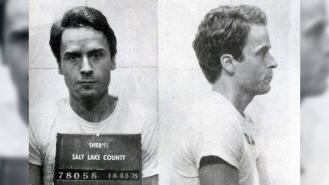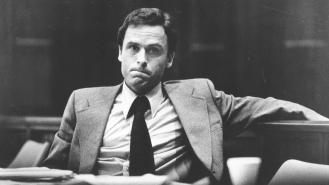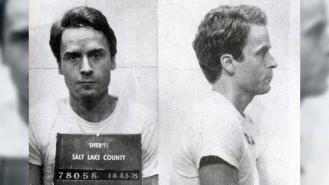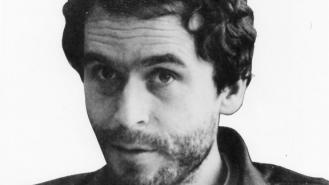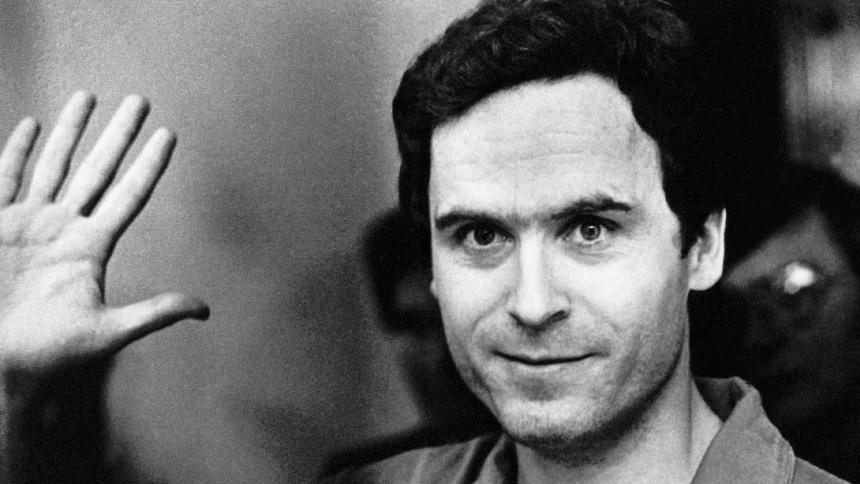
The execution of Ted Bundy: ‘His body stiffened and his hands clenched'
Ted Bundy is arguably America’s most infamous serial killer. His brutal crimes have inspired numerous books, documentaries and even movies. During the 1970s, he killed multiple women from coast to coast, with some experts speculating that his victim count could be in the hundreds.
Bundy would stand trial in 1979 and was convicted of the Chi Omega murders, which had taken place in Florida. He had broken into a sorority house and unleashed a frenzied attack on four women, killing two: Janet Lisa Levy and Margaret Bowman. Bite mark evidence would link him to one of the victims and eyewitnesses would place him at the scene. A couple of months later, Bundy would stand trial for the abduction and murder of 12-year-old Kimberly Leach, also in Florida. Fibres from his jacket would link him to the gruesome murder.
Judge Edward Coward would sentence Bundy to die in the electric chair for his ‘extremely wicked, shockingly evil, and vile’ crimes. In handing down the sentence, the judge also said that Bundy was a ‘bright young man’ who could have even been a brilliant lawyer one day, one who he would ‘have loved’ to have practice before him, if only he had have gone down another path (Associated Press, 9 February, 2019 – ‘Ted Bundy’s Murderous Charm Still Polarizes, 40 Years Later’).
Bundy’s time finally ran out towards the end of January 1989. The night before his execution, Bundy would permit a television network an interview that would broadcast nationally after his death. He was questioned by Californian psychologist and religious broadcaster, James Dobson, who would later claim that Bundy was ‘feeling great remorse.’ Bundy told Dobson that his crimes ‘should serve as a warning to the dangers of pornography.’ He claimed that his early exposure to pornography had ‘crystalized’ violent tendencies within him, leading him to ultimately rape and murder women.
Even down to the last hours of his life, Bundy was blaming something else for his reprehensible actions.
Since his arrest and even after his conviction, he had stuck to his original profession of innocence. However, as Bundy’s time ran out, he began to confess to murders, divulging more information as time went on. He confessed to 23 murders in several different states, including 11 in Washington. Many of these murders were unsolved and Bundy had never been suspected as being the perpetrator. Speaking about his murders, Bundy was asked if he had killed 36 women. He cryptically responded: ‘Add another digit.’
He described his trademark ruse of wearing a cast or sling and then enticing a woman to help him carry books or some other item to his car. Once here, he would knock the woman unconscious, bundle her into his car and then drive away to sexually assault them and murder them. During one confession with detective Robert Keppel, Bundy said:
‘I asked her to help me carry the briefcase, which she did, and we walked back up the alley. When we reached the car, I knocked her unconscious with the crowbar. There were some handcuffs there, along with the crowbar. I handcuffed her and put her in the passenger's side of the car and drove away. She was unconscious but very much alive. (The Deseret News, 26 January, 1989 – ‘Bundy’s Will Requests Cremation and Scattering of Ashes in Washington’ ).
Bundy had been buying time in the lead up to his execution and had succeeded in having three execution dates postponed. He would provide more details to the murders in a bid to preserve his own life. Bundy’s efforts would finally fail when the U.S. Supreme Court refused to block his execution. Bundy had not finished confessing, he had simply just run out of time (The Dallas Morning News, 25 January, 1989 – ‘Florida Prison Executes Remorseful Ted Bundy’).
After his interview with Dobson, Bundy was allowed to call his mother, Louise Bundy. She finished the phone call by telling him: ‘You will always be my precious son.’ He reportedly told his mother: ‘I’m so sorry I’ve given you all such grief, but a part of me was hidden all the time. But the Ted Bundy you knew also existed.’
He spent much of the night praying with Methodist minister, Fred Lawrence, from Gainesville, as his lawyers scrambled around trying to find some kind of legal loophole to save his life but to no avail. According to prison spokesperson, Bob Macmaster: ‘It appeared that he was accepting the finality of the situation.’ He turned down a last meal, opting instead to eat what the other inmates were eating: steak, eggs over easy, hash browns, toast with butter and jelly as well as milk and juice.’ (The Orlando Sentinel, 24 January, 1989 – ‘Bundy Prays and Reads Bible’).
It was reported that as Bundy was led to the death chamber to be strapped to ‘Old Sparky’ on the 24th of January, 1989, he appeared to be afraid. He paused as he entered the freshly painted death chamber, and his eyes gave away the fear that was evidently plaguing him. His legs began to tremble, and he needed help steadying himself.
Outside of Florida State Prison, more than 100 proponents of the death penalty had congregated to celebrate the execution. There was a macabre carnival-like atmosphere, with people lighting sparklers, dancing, and cheering. Some wore specifically designed t-shirts, with slogans such as ‘Burn Bundy, Burn’ emblazoned on the front.
Others wore Richard Nixon masks and carried signs and effigies of a person hanging from a noose. One witness, Bob Reeves, said: ‘Our country, our government has spent millions of dollars giving this guy every chance. His innocent victims spread all over the country - they didn't have a second chance. They didn't get to call Mom.’ (The Seattle Times, 24 January, 1989 – ‘Bundy Put to Death’).
Back in the death chamber, Bundy was strapped into the electric chair; the leather straps were tightened around his arms, legs, waist, and chest. He glanced towards his attorney, James Coleman, and then Minister Fred Lawrence, who had counselled him in the lead up to the execution. He said: ‘Jim and Fred, I’d like you to give my love to my family and friends.’ There were 42 witnesses there and according to Rep. Randy Mackey of Lake City: ‘He was calm but visibly shaken.’
A black leather hood was placed over Bundy’s head and a metal electrode was placed on the top of his freshly shaven head. The prison superintendent spoke on the phone to the governor’s office to ask if there were any reasons why the execution should not go ahead. He was told by Gov. Bob Martinez: ‘On behalf of the countless victims of Theodore Bundy both dead and living, throughout Florida and the nation, I direct you to proceed to carry out the court-ordered sentence.'
An executioner, who had been paid $150 to carry out the execution, flipped the switch at approximately 7:06 AM, sending 2,000 volts through Bundy’s body. His body stiffened and his hands clenched. According to legend, Bundy’s executioner was a woman. It would have been a fitting end to the life of a man who had terrorised women, but in Ann Rule’s book, The Stranger Beside Me, she debunks this as nothing more than lore. ‘That was part of the legend of Ted,’ she wrote.
Ted Bundy was pronounced dead at 7:16 AM on the 24th of January, 1989. He was the 106th man put to death since the United States Supreme Court reinstated capital punishment in 1976.
After the execution, Bundy’s body was transported to the Williams-Thomas Funeral Home and his remains were cremated. His ashes were then scattered over the Cascade Mountains, the same location where several of his victims’ bodies had been found.
Want to learn more about Ted Bundy? 'The Hunt for Ted Bundy' is streaming on Crime+Investigation. Find out more about the show or sign-up to start streaming.
